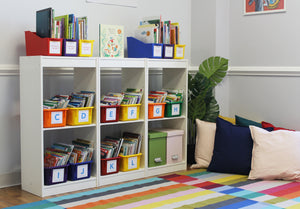Compare and contrast the same topic across genres
Pairing a fiction and a nonfiction text can enhance students’ understanding of a specific topic. The nonfiction text will give a lot of background information, and a narrative text will show the impact on characters. Let me show you how you can do a Close Reading of La jaula and ¡Libres, al fin!
I selected these two titles because they both talk about animals in captivity. Both works can be read multiple times.
With La jaula, I would recommend focusing on two Reading Literature standards first:
- RL.2.6 Acknowledge differences in the points of view of characters, and
- RL.2.3 Describe how characters in a story respond to major events and challenges.
With ¡Libres, al fin! you can lead conversations on these Reading Informational standards:
While I recommend reading La jaula twice as a read aloud, and ¡Libres, al fin! twice also as a read aloud, this next lesson is for a Close Reading. It is only possible to do a Close Reading analysis like this after the students have been introduced to the book, and have discussed it. The strategy here is to compare and contrast the same topic across genres by finding pieces of evidence in the text that make them the same and different. The pieces of evidence relate to the forms of captivity and the impact captivity has on animals.
To help students, we’ll use this graphic organizer.

While still reading aloud to students, teachers can hold their books under the document camera. Teachers must also model how to take notes in the graphic organizer using the first two animals in ¡Libres, al fin! Then, students can elaborate using both La jaula and ¡Libres, al fin! I’ve added sentence stems to help teachers and students alike create sentences that will help identify the evidence, and then write conclusions about similarities and differences. Graphic organizers are not strategies, but they can provide a visual and linguistic scaffold.
I hope you enjoy this resource!
Subscribe to future posts from Just Good Teaching here.
Your partner in all things dual language,
marie



Leave a comment